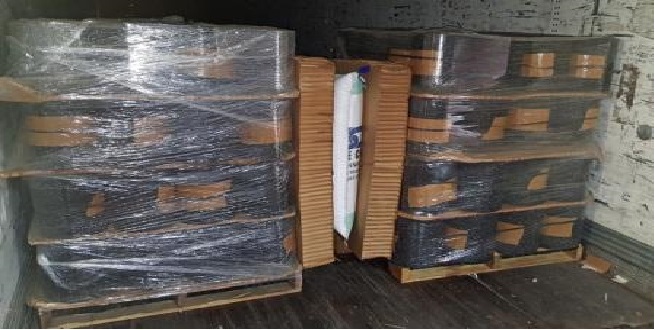- Stow steel plate on the bottom of the lower holds or the between decks.
- Stow steel plate level on dunnage so that the weight of cargo loaded on top of it will be evenly distributed over the entire plate.
- Stow steel plate in a fore-and-aft direction if possible.
- Sling steel plate on the quarters at a point about one-quarter of the length of the plates from each end.
- Use a round turn on each sling and use taglines to control the draft if long lengths of plate have a tendency to bend when slung.
- Use crowbars or wedge point bars for moving the plates into final stowed position.
Points to pounder for steel plate loading:
- Plate should be stowed in the fore and aft direction, with dunnage running athwartship and between each tier.
- Stowage should be from one side of the ship to the other, leaving no voids, and the top layer secured with wire or chain bindings.
- When loading thin plate, stowage in subsequent tiers can be in alternate directions
Dunnage
- Steel is a very high-density cargo, to avoid damage to the ship’s structure and to enable an even weight distribution, carefully apply dunnage between the ship and cargo, and within cargo tiers.
- Lay dunnage over strong points
- laying dunnage is an important part of safe and efficient carriage of steel. Ship’s officers should ensure that dunnage is laid properly.
Dunnage is applied to:
- create frictional resistance
- spread the load. Always use sufficient strips of dunnage to avoid exceeding the tank top acceptable point load. As the height of a stow increases so too does the requirement for additional strips of dunnage.
- avoid deformation of the cargo, especially when loading steel plate, coils and railway lines
- protect steel from moisture
- reduce possible movement within a stow, especially when carrying steel plate or slabs



Leave a Comment